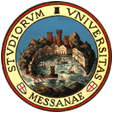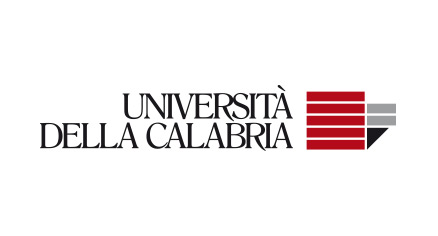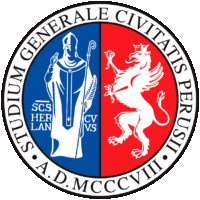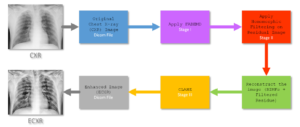The research unit at UNIME, which is coordinating the project at national level, is composed by 5 academic staff, prof. Giovanni Finocchio (PI), prof. Bruno Azzerboni, prof. ssa Anna Giordano, Prof. Francesca Garesci and prof. Filadelfio Mancuso and three PhD students, Andrea Grimaldi, Rayan Moukhadder and Eleonora Raimondo. The team has a long term experience in research activities related to spintronics and micromagnetic modeling (see for example the list of publication of the PI https://scholar.google.co.uk/citations?hl=en&user=eKDbn-oAAAAJ&view_op=list_works&sortby=pubdate).
Currently UNIME has active activities in the development of hardware accelerated solution for micromagnetic modeling (GPU-based). Together with POLIBA has developed the Petaspin micromagnetic solver (www.petaspin.com) which is a general purpose native CUDA-based solver. With this project the petaspin solver will be enhanced to describe self-consistently systems combining ferromagnets and antiferromagnets. UNIME has also experience in computing and in this project will focus on moving the probabilistic computing paradigms forward. UNIME has been and is currently involved in several project of micromagnetism and spintronics and it is a founder of the consortium SPINet.
The POLIBA research unit is coordinated by Prof. Mario Carpentieri and it includes additional 4 academic staff, prof. Vito Puliafito, prof. Davi Rodrigues, prof. Riccardo Tomasello, and Prof. Silvano Vergura and two PhD students, Francesco Cutugno and Luciano Mazza. The team has a long-term experience in research activities related to the design of spintronic storage devices as well as microwave oscillators and detectors.
(see for ex. the list of publication of the unit coordinator https://scholar.google.com/citationshl=it&user=QkIO5xEAAAAJ&view_op=list_works).
POLIBA is leader for the tasks within the WP2 – device concept of this project. In particular, it is involved in the activities concerning the development of spintronic amplifiers, THz detectors, and Skyrmion-Caloritronics. Together with UNIME, POLIBA has developed the Petaspin micromagnetic solver (www.petaspin.com) which is a general purpose native CUDA-based solver. POLIBA and UNIME have also successfully completed a project in collaboration with the Spatial Italian Agency about spintronics detectors for space applications. POLIBA continues to be involved in several projects of micromagnetism and spintronics, and it is a founder of the consortium SPINet.
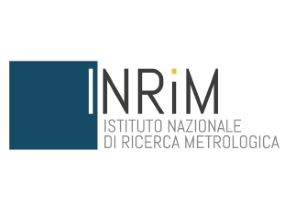
Istituto Nazionale di Ricerca Metrologica, Torino, Italy
The INRIM Unit involves two sub-units with have consolidated expertise on micromagnetic modelling and high-performance computing, and on magnetic material preparation and characterization at different scales.
The Modelling sub-unit comprises Dr. Alessandra Manzin (over 20 years of research experience, h-index 19) and Dr. Riccardo Ferrero (currently post-doc). The sub-unit has strong competences in the development of advanced numerical models and high-performance computing tools in the fields of electromagnetics, micromagnetics and nanotechnology. These competences are focused on the design of nanostructured magnetic materials (e.g. nanoparticles, nanostructured thin-films), and magnetic nano/microsensors and electromagnetic devices for biomedical and metrology applications.
The Experimental sub-unit comprises Dr. Paola Tiberto (over 30 years of research experience, h-index 30), Dr. Carlo Appino (about 35 years of research experience, h-index 18) and Ms. Federica Celegato (about 20 years of research experience, h-index 18). The sub-unit has a wide expertise in materials science, with focus on the preparation of magnetic nanomaterials (nanoparticles, thin-films and nanostructures) and their characterization from dc to high frequency, including hysteresis, magnetotransport and magnetization dynamics measurements. Alongside magnetometry techniques (SQUID, VSM), the sub-unit has experience in imaging techniques based on MFM.
Both Modelling sub-unit and Experimental sub-unit have provided their expertise in several national and international research projects in the framework of FP7, H2020 and HORIZON programmes, and EURAMET (the European Association of National Metrology Institutes). Within EURAMET, the Modelling sub-unit is member of MathMet (the European Metrology Network for Mathematics and Statistics).
The UNICAL Unit is composed by prof. Marco Lanuzza (local unit coordinator, over 20 years of research experience, h-index 21) and by prof. Marco Ricci (over 20 years of research experience, h-index 24). In addition, Dr. E. Garzon (post-doc student) and Mr. B. Zambrano (Ph.D. student) are involved in the research team. The UNICAL team has a long-term experience in designing specialized VLSI systems and circuits exploiting spintronic technologies. UNICAL has been and is currently involved in several international research projects in the framework of FP7 and H2020 and it is a founder of the consortium SPINet.
The UNIPG unit involves two sub-units, one at Dept. of Physics and another at Dept. of Engineering.
The Physics sub-unit is composed of two academic staff, i.e. Prof. Giovanni Carlotti (about 35 years of research experience, with more than 200 published papers in international journals) and Prof. Marco Madami (about 20 years of research experience, with more than 120 published papers). Moreover, the physics group involves two CNR staff, i. e Gianluca Gubbiotti (more that 25 years of research experience, with more than 200 published papers) and Silvia Tacchi (more than 20 years of research experience and about 150 papers published papers). This group has extensive expertise in the exploitation of both conventional and micro-focused Brillouin Light Scattering (BLS) for the study of the dynamical properties of nanostructures, ultrathin films and multilayers. Moreover, it has a consolidated expertise in the experimental study of spin waves in magnonic crystals and in the determination of the DMI constant in layered materials, as well as in micromagnetic modelling of spin wave propagation. The group has been recently involved in the following research programs: FP7 project “Mastering Magnons in Magnetic Meta-Materials” (2009-2013) and the H2020 project “Landauer” (2012 2016), Euramet 17FUN08 project intitled “Topological Spin Structures” (TOPS) (2019-2021) . Moreover, UNIPG has coordinated the National Relevant Project “DyNanoMag” (2013-2016), with other five national partners. More informations can be found here: https://sites.google.com/view/ghost-laboratory
The Engineering sub-unit involves Prof. Antonio Faba (about 20 years of research experience, with more than 100 published papers). He has an advanced expertise on the modelling and experimental characterization of bulk magnetic materials, especially for the vector representation of magnetization processes of soft magnetic cores. It has been recently involved in the following research programs: 2019-2034, Work Package 1450 (EMC Testing) of the Project “Research activities and innovative skills developments” financed by Italian Space Agency and the University of Perugia; 2016-2019, “AHEAD Integrated Activities in the High Energy Astrophysics Domain” financed by the European community – European Horizon 2020. More informations can be found on http://laboratoriocem.tr.unipg.it/index_eng.htm

